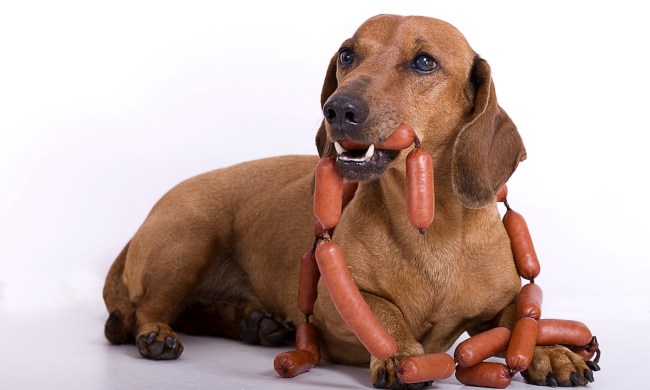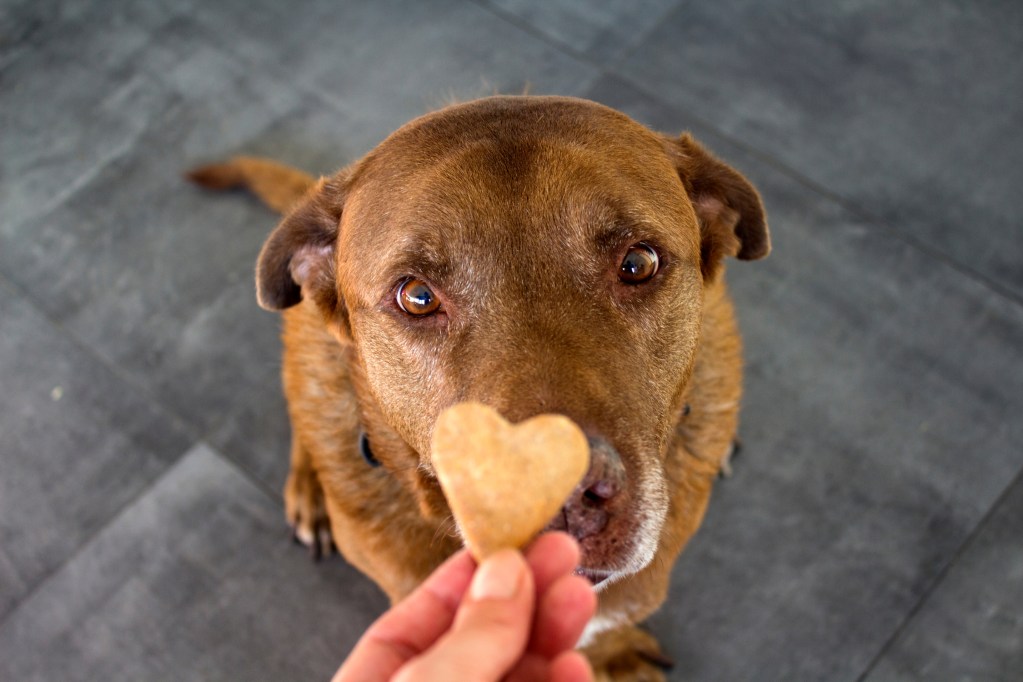
When it comes to your fur baby, only the best passes the test. You want to make sure you’re feeding your pet the safest, most trustworthy ingredients, and is there anyone you trust more than yourself?
If you’ve ever wondered how to make dog treats, a simple recipe is a great place to start. These DIY dog treats are made from ingredients you probably already have in your kitchen, so all you’ll need is some dedicated time. Don’t forget to call your four-legged sous-chef for taste testing! She’ll be happy to oblige, we’re sure. Here are six easy DIY dog treats anyone can make.
What are the most high-value treats for dogs?

Frozen bone broth
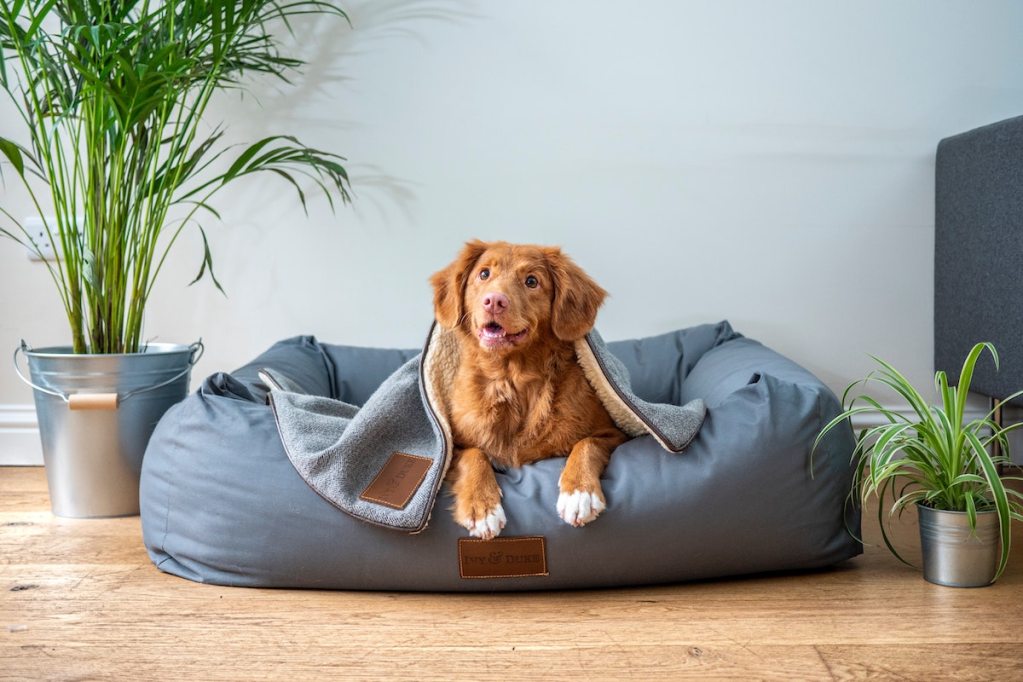
This one is perfect for pet parents who are short on time and ingredients. All it requires is broth, whether you purchase or prepare it yourself, and a spare ice cube tray. As the name of this simple treat implies, simply fill the tray with broth and freeze it overnight.
Frozen yogurt or peanut butter (free of xylitol!) can be used for a sweeter treat. Unlike some treats, which will vanish down your dog’s throat in seconds, these lickable morsels will keep your pup occupied for a few minutes. Perfect for those hot summer months!
Pyramid pan bacon treats
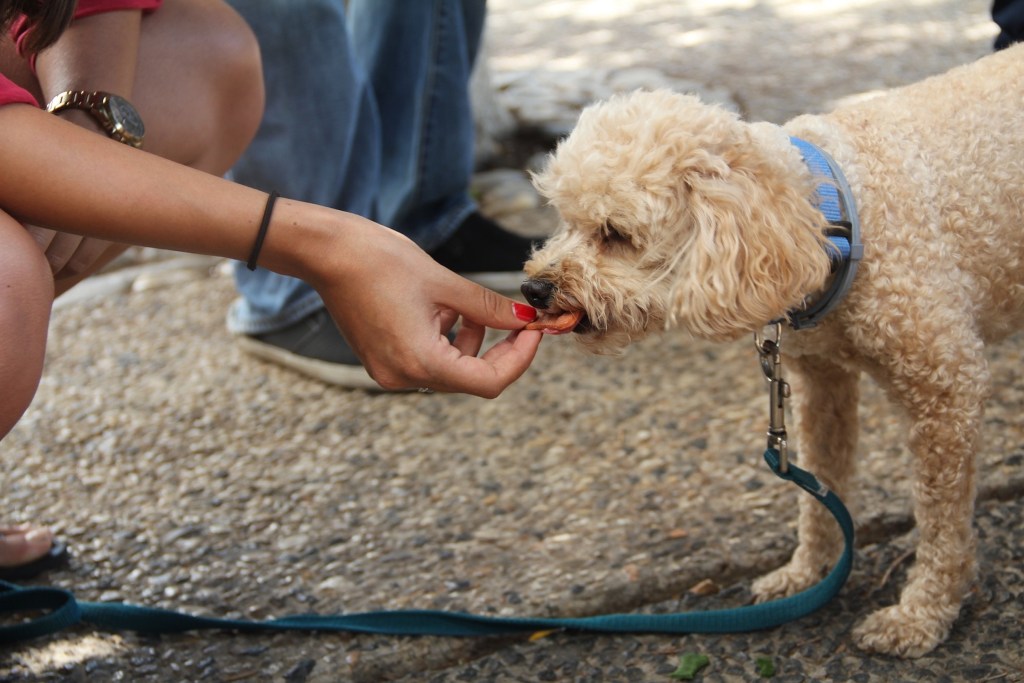
These four-ingredient treats are made even simpler with the help of one kitchen must-have: the pyramid pan. This baking essential helps treats pop up when they’re done, so you’ll be able to make plenty with no fuss.
This recipe is shared by the American Kennel Club (AKC) — so you know you’re hearing from the best! Simply blend the bacon (or your choice of meat) with eggs in a food processor, mix in flour and water, and bake! With this and any recipe, you can substitute wheat flour with brown rice or oats for a gluten-free option.
Two-ingredient baby food/puree bites

Make use of any extra baby food you have in the house with this easy recipe, courtesy of Kiki’s Canine Kitchen via Rover. Just mix any dog-safe baby food or produce puree (here’s a full list of fruits and veggies that dogs can have) with your favorite flour and spoon the batter into treats to be baked.
For this recipe, aim for about 1 cup of flour to 1 jar/4 ounces of baby food or puree, and bake for about 25 minutes at 350 degrees Fahrenheit. You can select portion sizes for your pup either by scooping batter onto a tray before baking or by cutting up your dog treat cake after baking.
Dehydrated sweet potato dog treats
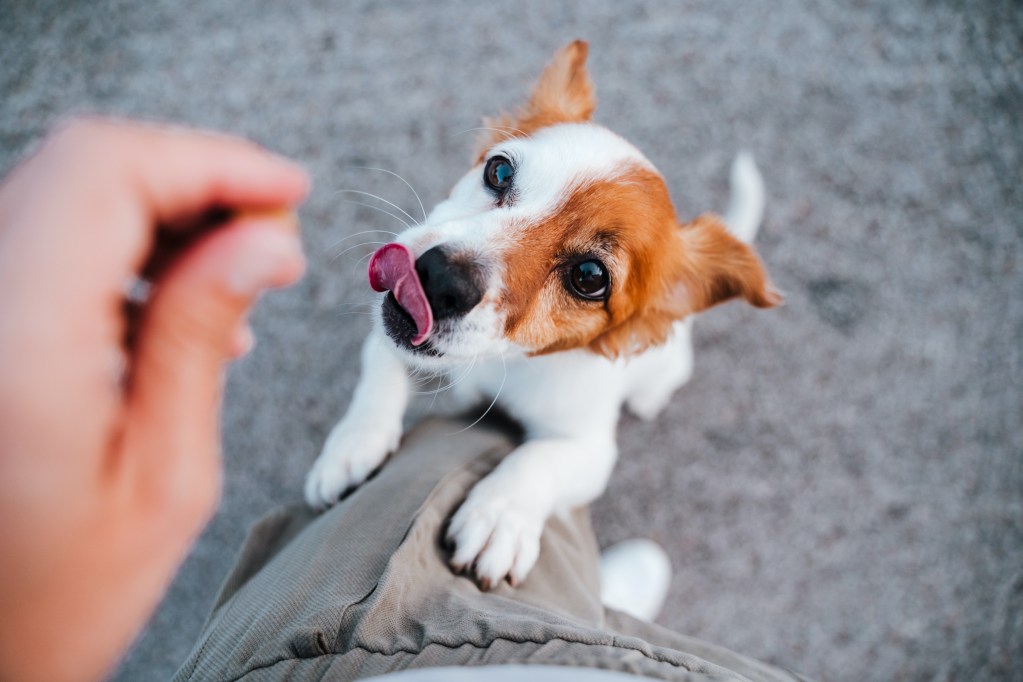
It doesn’t get much easier than this! The only (yep — only!) ingredient you’ll need is a canine favorite: sweet potato. To dehydrate these treats properly, and for a chewy yet flavorful finish, be prepared to cook them at a low temperature for quite a long time. About 6 to 8 hours in the oven at 200 to 250 degrees Fahrenheit should do the trick.
An estimated 10 hours at the same temperature in an air fryer should have the same effect. Make sure not to peel your potatoes, as the skin contains even more nutrients than the rest of the plant. Thin slices will also help them dry faster, since you’re looking for absolutely zero moisture in your finished treats.
Fish fillets for dogs

Another easy treat for your furry friend might make your mouth water, too. Dogs can eat, and usually enjoy, many types of fish, including salmon, herring, char, and even tuna (you can find a fuller list from AKC). To prepare fish for dogs, cook it without using any oils or seasonings since those can upset your dog’s stomach. Make sure anything you feed her is free of bones, fins, and rough scales. Raw fish is also a no-go for dogs.
Pumpkin peanut butter dog treats

If you love baking, you’ll have a blast putting these together for your pup. Using four ingredients, which is slightly more than other recipes on this list call for, you’ll mix and roll out a delicious dough, which you can cut into your favorite shapes. Thanks to the ASPCA’s recipe, you can customize ingredients and portion sizes to fit your dog — and your kitchen. These biscuits will keep fresh for about a week when sealed tightly, so don’t make too many.
Hungry yet? Your dog sure is. They’re bound to love her homemade treats, but you can always play around with pet-safe ingredients until you find a concoction your canine goes crazy for. Whether you use these treats during training or just as a special snack, preparing them at home will give you even more ways to bond with your pet. Let’s put it this way: You’ll always have someone to lick the spoon.



